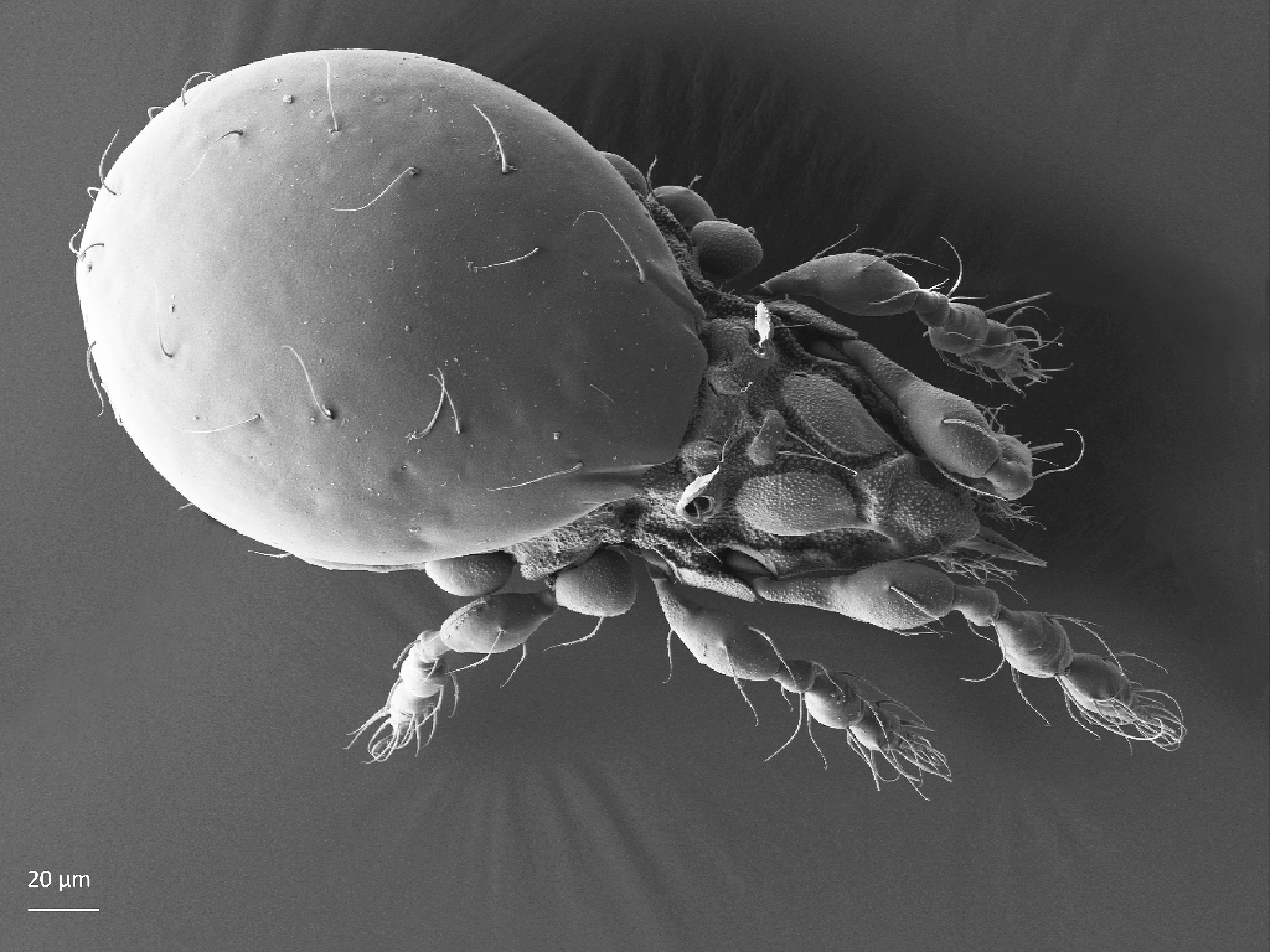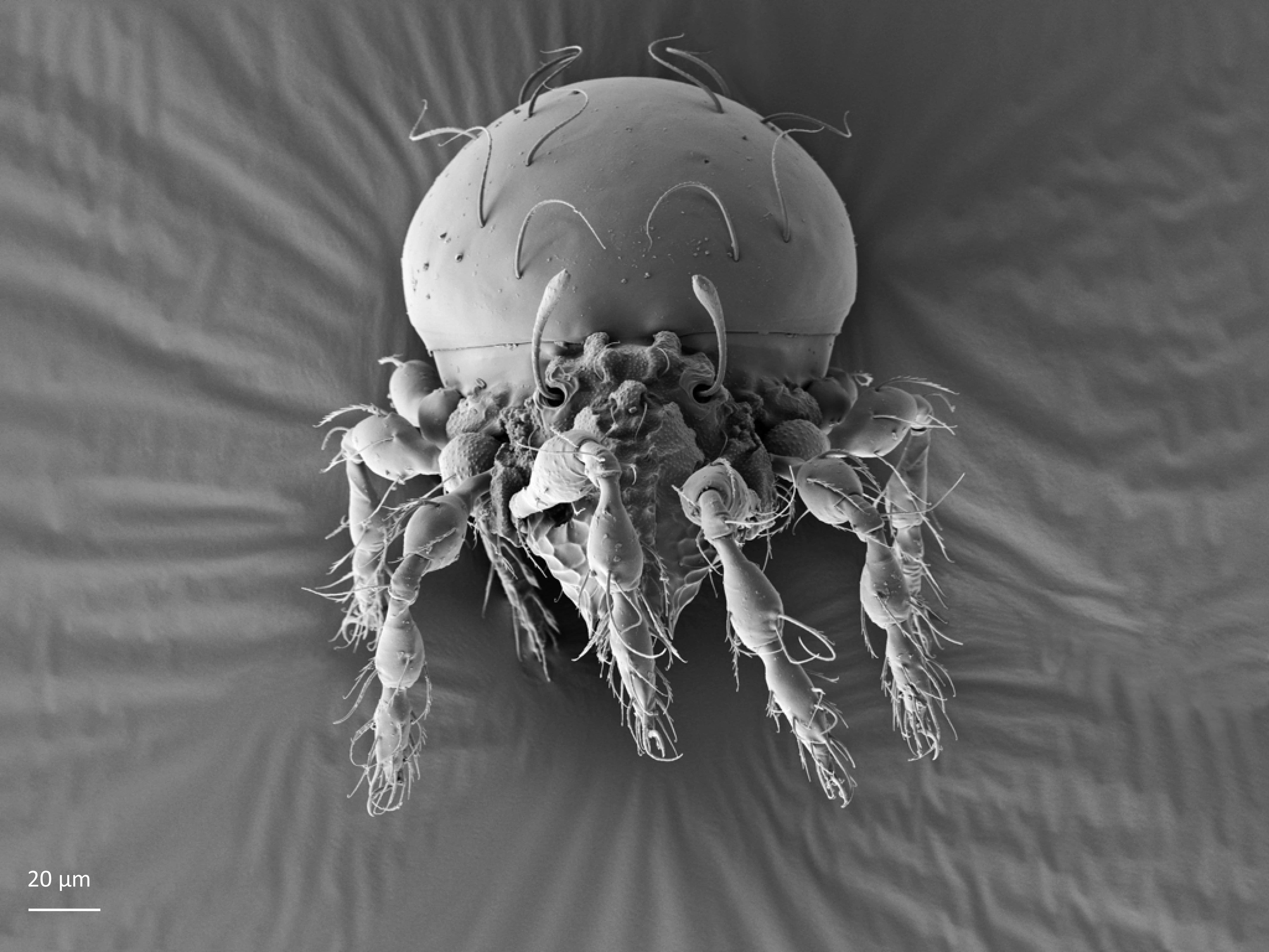Suctobelbata truncicola
The species is Palearctic, silvicolous (forest-living) and found under tree bark of dead wood. It is rare. It was first recorded in Norway in 2019. Suctobelbata truncicola is the only representative of the genus Suctobelbata known in Norway. The reproduction is parthenogenetic, only females are present and they are produced from unfertilized eggs.
Description

Fig. 1. Dorsal view of Suctobelbata truncicola, adult.

Fig. 2. Dorsal view of Suctobelba trigona, adult.
Adult: The body length is 354–391 µm, and width is 192–193 µm. The color is light to dark brown. As in all Suctobelbata the front edge of notogaster has one pair of lateral teeth and a transverse protrusion in the middle (Fig. 1). Rostrum is rounded at the tip. Rostral setae are weak, with very fine setae. Front of prodorsum does not have any sculpture, middle section has numerous nodes. Bothridial seta is lanceolate in side view (i.e. looking like a lance head), and rounded in view from the back, it has a few very small cilia on the outer edge.
Juvenile stages: unknown.
Look-alikes
It somehow resembles Suctobelba e.g. S. trigona (Michael, 1888) but Suctobelbata has one pair of lateral teeth and a transverse protrusion in the front of notogaster, while Suctobelba has only a thickening near each bothridium (Fig. 2). Suctobelbata truncicola is the only representative of the genus Suctobelbata known in Norway.
Biology
The reproduction is parthenogenetic, only females are present and they are produced from unfertilized eggs. The development and feeding preferences of S. truncicola have not yet been studied.
Ecology
Distribution
The species is Palearctic, by 2020 found in Norway, Sweden and Japan.
Habitat
It is a silvicolous (forest-living) species found under tree bark of dead wood. It is rare.
Findings in Norway
It was first recorded in Norway in 2019. It was found in a low-herb broadleaf forest, in Kvam, Western Norway. Only ten adult specimens, among over 6300 oribatid mite specimens examined, were found in dead wood and in mosses growing on dead wood.
References
Forsslund KH (1941). Schwedische Arten den Gattung Suctobelba Paoli (Acari, Oribatei). Zoologiska Bidrag, Uppsala 20, 20: 381–396.
Seniczak A, Bolger T, Roth S, Seniczak S, Djursvoll P and Jordal BH (2019). Diverse mite communities (Acari: Oribatida, Mesostigmata) from a broadleaf forest in western Norway. Annales Zoologici Fennici 56(1), 121–136. doi.org/10.5735/086.056.0111
Subías LS (2004). Listado sistemático, sinonímico y biogeográfico de los ácaros oribátidos (Acariformes, Oribatida) del mundo (excepto fósiles). Graellsia 60 (número extraordinario), 3–305.
Siden siteres som:
Seniczak A (2020). Suctobelbata truncicola (Forsslund, 1941). www.artsdatabanken.no/Pages/286338. Nedlastet <dag/måned/år>

